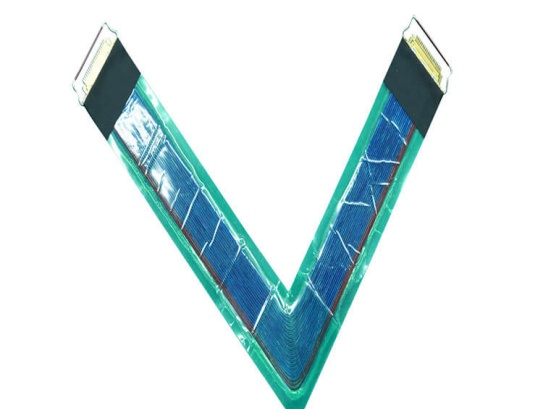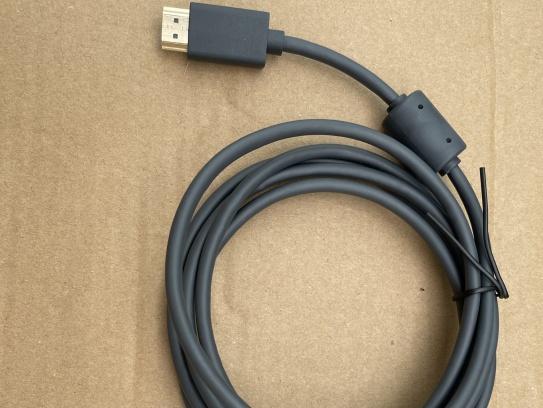The global micro-coaxial cable market is experiencing dynamic growth, driven by advancements in high-frequency signal transmission and miniaturized electronics. Recent research highlights key trends shaping this niche but critical sector. Key Growth Drivers 5G Expansion: Ultra-thin coaxial cables are essential for 5G base stations and small-cell networks due to their low signal loss at high frequencies. Medical Electronics: Rising demand for minimally invasive surgical devices leverages micro-coaxial cables’ flexibility and EMI shielding. Automotive Innovation: Advanced driver-assistance .
Read more →HD video is characterized by its high resolution, vivid colors, and smooth motion. To achieve this level of quality, a large amount of data needs to be transmitted accurately from the source (such as a Blu – ray player, camera, or computer) to the display device (like a TV, monitor, or projector). Any degradation in the signal during transmission can result in a variety of issues, including pixelation, color distortion, and lag. Low – loss signal transmission wires are designed to minimize these problems. They are engineered to maintain the integrity of the video signal as it travels ov.
Read more →In the realm of utility infrastructure, underground direct burial cables stand as a critical component, offering a reliable and space-efficient alternative to overhead lines. Designed to withstand harsh environmental conditions while delivering consistent power or data transmission, these cables require careful planning, selection, and implementation to ensure long-term performance. This article explores key considerations and practical solutions for utilities leveraging underground direct burial cable systems. Design Considerations for Optimal Performance The success of a direct burial cable sy.
Read more →In the dynamic world of modern manufacturing, multi-robot assembly lines represent the pinnacle of efficiency, speed, and precision. These complex systems, where multiple robotic arms collaborate seamlessly, demand flawless communication and power delivery. At the heart of this intricate dance lies a critical, yet often overlooked component: the cabling. Standard off-the-shelf cables frequently fall short, leading to downtime, signal errors, and compromised productivity. This is where micro-coaxial cable customization emerges as the indispensable solution, specifically engineered to unlock the f.
Read more →If you’re setting up a satellite dish, having the right wiring kit can make all the difference. A satellite dish wiring kit with premium cables isn’t just an add-on—it’s a key part of ensuring reliable signal, clear reception, and long-term performance. Let’s break down why these kits matter, what they include, and how to choose the best one for your needs. Why Premium Cables Matter in Satellite Wiring Satellite signals are delicate. Weak or interference-prone cables can lead to pixelated TV, dropped channels, or slow internet (if you’re using satellite for data). Premium cables solve these issu.
Read more →As 5G networks continue to expand globally, the demand for reliable, high-performance Distributed Antenna Systems (DAS) has never been greater. DAS plays a critical role in extending 5G coverage, improving signal quality, and supporting the massive data throughput required by modern applications—from autonomous vehicles to IoT devices. At the heart of an efficient 5G DAS lies the choice of transmission cables, and micro-coaxial cables have emerged as a game-changing solution, addressing key challenges that traditional cables struggle to overcome. Why 5G DAS Demands Specialized Cables 5G operates.
Read more →Can't find what you're looking for?
Our customer support team is ready to assist you with any questions or concerns.
Search FAQs
Related Articles
Types of Micro Coaxial Connectors
Micro coaxial connectors are essential components in modern electronics, enabling high-frequency signal transmission in compact devices. H.
What Type of Miniature Coaxial Cable Is Used for Underwater Robots
Meta Description: Discover the best miniature coaxial cables for underwater robots. Learn about durability, waterproofing, and perfor.
Best Practices for Coaxial Cable Maintenance and Care
Coaxial cables are vital for transmitting high-frequency signals in various applications, from home TV setups to professional communicatio.
How to Choose the Right Micro-Coaxial Cable for RF Applications
Selecting the optimal micro-coaxial cable for your Radio Frequency (RF) application is critical. The wrong choice can lead to signal degra.
How to order bulk quantities of Coaxial Cable Assemblies
Ordering bulk quantities of coaxial cable assemblies is a critical process that directly impacts project timelines, budget efficiency, and.
How to find technical specifications for Coaxial Cable Assemblies
Coaxial cable assemblies are critical components in countless electronic systems, from telecommunications and aerospace to medical devices.



